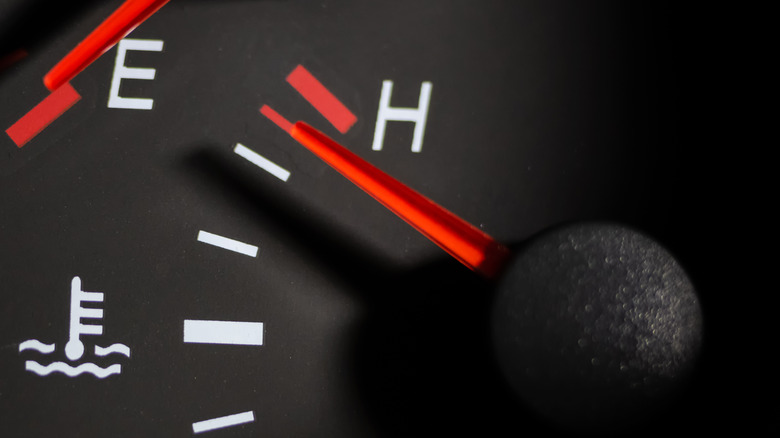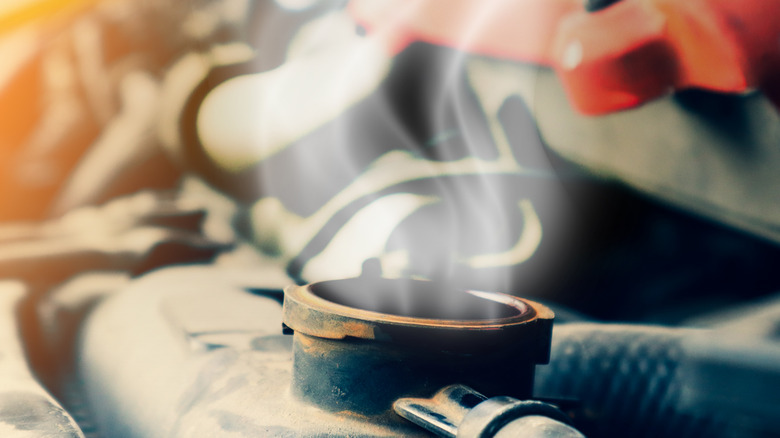Can You Add Coolant When The Engine Is Hot (And What Happens If You Do?)
When it comes to car trouble, few issues can produce blind panic in a driver faster than an engine overheating. Likewise, there are few car problems that can result to more expensive repairs, with worst case scenarios potentially resulting in catastrophic engine failure. Of course, if you're properly maintaining your vehicle and its delicate cooling systems, your car's engine should never get anywhere near worst-case, even on the off-chance it does begin to overheat.
There are, however, no guarantees that such an engine issue won't befall you even if you are changing your coolant as often as recommended. Should you find yourself driving a vehicle with a steaming engine, there are several steps you need to take, and at some point you'll likely want to add a coolant to the vehicle, as a lack of such fluids is one of the main causes of an overheat.
The question then becomes whether or not you can, or even should add coolant to an engine while it is still hot. In case there's any doubt, the answer to that query is a resounding "no," as the rule of thumb is that you should wait until an engine has cooled off entirely before you even think about removing the cap to the coolant reservoir, let alone pouring coolant inside. There are reasons that waiting for an engine to cool has become the standard operating procedure for overheats, and they are primarily to prevent personal injury and further damage to your vehicle.
Adding coolant to a hot engine can cause serious damage to you and your car
To be clear, it is technically possible to remove the coolant's fill cap and pour fluid into the reservoir when your engine is still hot, and that's true even if it is overheating. But from a safety standpoint, it's important to wait until the engine is cool before checking or adding coolant because: 1) the reservoir cap will be as hot as the engine and could severely burn your hand, and 2) the fluid inside will also be extremely hot even after you turn the engine off, and since it's contained in a pressurized environment, removing the cap could send boiling coolant spewing into your face or onto your person.
Apart from preventing personal injury, adding coolant to a hot engine can also cause damage to the engine itself, and can be particularly dangerous when it is overheating. After all, adding coolant to the engine will swiftly and significantly lower the temperature of the components connected to the engine and cooling systems. If those components cool off too quickly, it could result in potentially irreparable damage such as fissures and cracks throughout.
To avoid such a calamitous outcome, it's wise to wait at least 15 to 30 minutes after a car has been turned off to remove the cap from the coolant reservoir or to try and pour coolant in. The wait could be even longer in extreme situations. So, be sure to err on the side of caution whenever you are checking the coolant levels or adding coolant to your engine.

